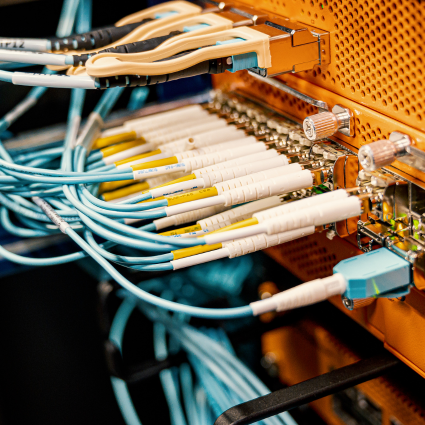Network engineers encounter more challenging problems as networks grow larger and more complex. Today’s networks connect cloud services, containers, and data centers, making them hard to manage. The Model Context Protocol (MCP) helps connect AI to your network tools, letting you solve problems using plain language. In this article, we’ll look at the top MCP servers that help network engineers work better.
What Makes a Great MCP Server for Network Engineers
The best MCP servers for network engineers show you what’s happening in your network, let you make changes, and track essential metrics. They connect safely to your systems, offer strong search features, and work well with your existing network monitoring tools. Most importantly, they translate between human language and the special tools network engineers use every day.
Network engineers need MCP servers that handle specific tasks like:
- Finding network problems quickly
- Changing network settings without remembering the exact commands
- Checking if networks are running correctly
- Seeing traffic patterns and bottlenecks
- Managing security across different network parts
- Connecting different tools to solve complex problems
Good MCP servers also keep your network safe by asking for permission before making important changes. They check credentials properly and limit what actions they can perform based on your permissions.
Although client support is still in its infancy, support for roots or sampling is also a hallmark of a well-designed MCP server. These features allow for boundary access and more complex completions, respectively.
Top MCP Servers for Network Engineers
Below are some of the best MCP servers for network engineers:
1.Kubernetes MCP Server
The Kubernetes MCP Server connects AI helpers to Kubernetes and OpenShift clusters, giving you full management abilities without needing extra tools.
Key Features:
- See everything in your cluster, including pods, namespaces, and events
- Work with pods (see logs, run commands, deploy pods)
- Manage OpenShift projects
- Create, read, update, and delete any Kubernetes resource
- Watch configuration changes in real time
This server works without needing kubectl or helm. It finds your configuration automatically and works smoothly with Claude Desktop and VS Code. Network engineers who manage container-based systems can talk to their Kubernetes resources using plain language.
The Kubernetes MCP Server stands out because it doesn’t need any external dependencies. You don’t need to install kubectl, helm, or other command-line tools on your system. If you use the compiled version, you don’t even need Node.js or Python installed.
Unlike other Kubernetes tools, this server directly connects to the Kubernetes API. It doesn’t just wrap command-line tools, which makes it more reliable and gives it more capabilities. You can use it to examine network policies, debug service connections, and diagnose pod communication issues.
Sample Use Case: Looking into network problems between pods in different namespaces by checking logs, events, and connections using simple language commands. For example, you might ask: “Show me all network errors in the backend pods over the last hour,” or “Check if the frontend pod can reach the database service.”
2.Docker MCP Server
The Docker MCP Server lets you manage containers through conversation, making Docker operations easier.
Key Features:
- Create and manage containers using plain language
- See container stats and logs as MCP resources
- Manage volumes and networks
- Works like Docker Compose but with conversation
Docker containers are key networking components in many systems. This server lets network engineers manage container networking, fix connection issues, and deploy networked applications through conversation.
What makes this server special is its ability to understand natural language descriptions of container setups. Instead of writing complex Docker Compose files, you can simply describe what you want, and the AI will create the right container configurations. This includes setting up network bridges, exposing ports, and connecting containers together.
The server is safety-focused and doesn’t allow privileged containers or dangerous capability additions. It also helps prevent sensitive data exposure by warning you about putting secrets directly into container configurations.
Sample Use Case: Setting up multiple connected containers with the right network bridges by simply describing what you want in everyday language. For instance, “Deploy a WordPress container and a supporting MySQL container, exposing WordPress on port 9000” – the server will create the proper network connections between these containers automatically.
3.Cloudflare MCP Server
The Cloudflare MCP Server gives you access to Cloudflare’s wide range of networking, security, and application services.
Key Features:
- Develop Workers applications
- Access monitoring data
- Analyze audit logs
- Optimize DNS performance
- Monitor digital experiences
Engineers who manage public-facing systems get big benefits from this server. It helps troubleshoot network connection issues, makes DNS faster, and manages CDN settings through conversation.
The Cloudflare MCP Server actually consists of multiple specialized servers that work together:
- Documentation server for reference information
- Workers Bindings server for application development
- Observability server for debugging and insights
- Radar server for global internet traffic analysis
- Container server for sandbox environments
- Browser rendering server for web content processing
- Logpush server for log management
- AI Gateway server for prompt and response analysis
- AutoRAG server for document search
- Audit Logs server for security reviews
- DNS Analytics server for performance optimization
- Digital Experience Monitoring server for application insights
- Cloudflare One CASB server for security configuration
This comprehensive set of tools helps network engineers manage everything from edge networking to security and performance optimization through a single interface.
Sample Use Case: Looking at DNS performance across global locations and making improvements based on traffic patterns found through simple queries. You could ask, “Show me the regions with the slowest DNS response times,” or “Compare our CDN performance before and after enabling Argo Smart Routing.”
4.Prometheus MCP Server
The Prometheus MCP Server connects AI helpers to your metrics, letting you query network monitoring data through conversation.
Key Features:
- Run PromQL queries using plain language
- Find and explore available metrics
- View instant and range query results
- Works with different authentication methods
Network engineers rely on metrics to understand system health. This server lets you query complex performance data naturally, find connections between metrics, and investigate performance problems more efficiently.
The server includes support for multi-tenant setups like Cortex, Mimir, or Thanos through organization ID settings. It can be configured to run inside Docker containers for isolation and easier deployment. The server handles authentication through basic auth, bearer tokens, or without authentication for simple setups.
All metrics operations are available, including executing instant queries, range queries with different step intervals, listing metrics, and fetching metadata. This gives network engineers a complete view of performance data without needing to remember complex PromQL syntax.
Sample Use Case: Looking into network delays by querying related metrics and connecting them with application performance during specific time periods. You might ask: “Show me network latency metrics during our traffic spike yesterday,” or “Find correlations between high CPU usage and increased network errors.”
5.Grafana MCP Server
The Grafana MCP Server goes beyond metrics to give you complete visibility across dashboards, logs, and alerts.
Key Features:
- Search and manage dashboards
- Connect to data sources (Prometheus, Loki, Tempo)
- Manage incidents
- Configure alerts
- Work with on-call schedules
Modern networks need comprehensive monitoring. This server connects all these monitoring pieces through conversation, letting engineers investigate issues across metrics, logs, and traces without switching between tools.
What makes this server powerful is its ability to work with the complete Grafana ecosystem:
- Metrics from Prometheus
- Logs from Loki
- Traces from Tempo
- Profiles from Pyroscope
- Incidents from Grafana Incident
- Alerts from Grafana Alerting
- On-call rotations from Grafana OnCall
- AI-powered investigations from Grafana Sift
The server allows you to customize which tools are available by disabling categories you don’t use. This helps manage context window usage and focuses the AI on your most important monitoring tools.
Sample Use Case: Looking into a network outage by exploring relevant dashboards, checking alert history, and reading logs from affected services, all through conversation. A network engineer might ask: “Show me all alerts that fired during our outage window,” or “Find log entries with network timeout errors in the application servers.”
6.Multicluster MCP Server
The Multicluster MCP Server lets you work with multiple Kubernetes clusters through a single interface, giving you centralized management.
Key Features:
- Hub-and-spoke cluster management
- Get resources across clusters
- Run operations across clusters
- Manage custom cluster roles
Organizations with distributed infrastructure benefit from this server’s ability to work across cluster boundaries. Network engineers can fix connectivity across environments, deploy consistent configurations, and manage multi-cluster networking policies.
This server particularly helps with modern network architectures that span multiple clusters, possibly across different cloud providers or regions. It lets you view network policies consistently, understand connectivity between services in different clusters, and manage network resources from a central point.
The server works with Open Cluster Management to provide a unified view across your infrastructure. It treats your configured cluster as the hub cluster and accesses managed clusters through it. This follows the hub-and-spoke model common in multi-cluster Kubernetes setups.
Sample Use Case: Comparing network policies across development, staging, and production clusters to ensure consistent security. You could ask: “Show me differences in network policies between dev and prod clusters,” or “Check if the same services are accessible in all environments.”
7.AWS MCP Server
The AWS MCP Server helps manage infrastructure across AWS services, focusing on S3 and DynamoDB.
Key Features:
- S3 bucket and object operations
- DynamoDB table and item management
- Operation tracking
- AWS credential management
Network engineers working with cloud infrastructure need AWS capabilities, especially when diagnosing connections between services or managing configuration data. This server provides these capabilities through conversation.
The AWS MCP Server maintains an audit log of all operations performed. This log is accessible through the audit://aws-operations resource endpoint, giving network engineers a clear view of what changes have been made to their AWS infrastructure.
The server handles AWS credentials through the standard AWS credential chain, including environment variables or credentials configured with the AWS CLI. This makes it easy to integrate with existing authentication methods while maintaining security best practices.
Sample Use Case: Getting and analyzing network configuration data stored in S3 or DynamoDB to diagnose routing issues between AWS regions. You might ask: “Find all VPC configuration files in our S3 bucket” or “Retrieve the routing table entries from our network configuration database.”
8.RabbitMQ MCP Server
The RabbitMQ MCP Server lets you work with message queues, helping manage event-driven network systems.
Key Features:
- Manage queues and topics
- Publish and consume messages
- Handle connections
- Configure TLS security
Event-driven systems rely on message brokers for communication. Network engineers managing these systems benefit from troubleshooting message flow, analyzing queue backlogs, and managing broker connections through conversation.
The RabbitMQ MCP Server works with both standard RabbitMQ connections and secure TLS connections. You can configure connection details, including hostname, port, username, password, and TLS requirements through command-line arguments.
This server helps network engineers understand message flow across distributed systems. Modern microservice architectures often use message queues for decoupled communication between services. When network issues occur, understanding the message flow can help diagnose where communications are breaking down.
Sample Use Case: Diagnosing message delivery issues by examining queue states, consumer connections, and message processing rates across distributed systems. Network engineers might ask: “Show me queues with the highest message backlog,” or “Check if all consumers are connected to the order processing queue.”
Conclusion
MCP servers change how network engineers work with their infrastructure. By connecting AI to networking tools, engineers solve problems faster and manage complex environments more easily. Start with servers that match your environment—whether Kubernetes, cloud providers, or monitoring systems—and add more as you get comfortable with the workflow. In the not-so-distant future, I believe network engineers will also be tasked with monitoring and debugging MCP servers, leading to an entirely new class of problems to be solved.
About the Author
Matt Lenhard is a serial entrepreneur and software engineer who previously founded LendEDU, ContainIQ, and Positional—startups spanning fintech, Kubernetes observability, and SEO. He’s currently building MCPevals.io, a platform for evaluating Model Context Protocol tools and clients. Matt specializes in infrastructure, AI agent tooling, and developer-first products.





